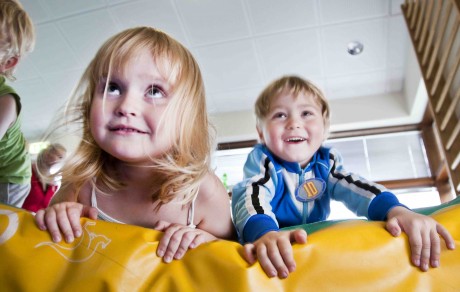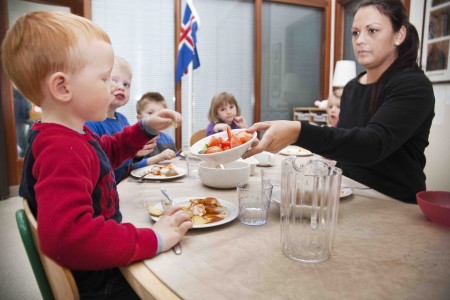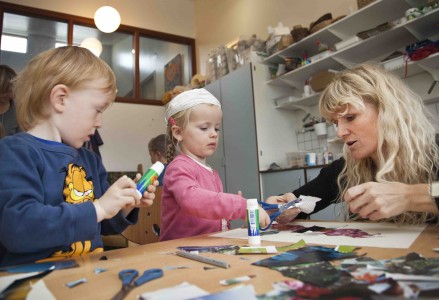1. Holistic approach
The school shall aim for a mental, physical and social well-being of the children by promoting physical-, mobile-, emotional-, intellectual-, social-, aesthetic- and moral development.
1.1. The individual
The following primal needs have to be met by the health school system on both individual and social levels:
– love – to belong to someone
– freedom – to have choices
– respect – to be respected on one’s own terms
– joyfulness – to experience joy
1.2. The Teacher
Teachers are role models to children and therefore they need to dedicate themselves to a healthy lifestyle and cultivate a positive attitude towards health so as to guarantee their own well-being at the work place. At the health school every member of staff is dedicated to the upbringing and the health of the children. The teachers need to be positive towards the goals of the health policy and both encourage and educate on healthy lifestyle. A emphasize must be made on utilising the human wealth that the society of the kindergarten has to offer at each and every time.
1.3. Playing
Playing is a cornerstone of kindergarten activities and the child’s education takes place through playing. In youth playing equals education and from it grows knowledge, new emotions, actions and skills. Through playing the child expresses itself and finds an outlet for the emotions. An emphasis must be laid on finding good time and creating an environment that encourages self-education through playing. Free play has to involve material that enables both inquiry and creativity.
1.4. Skills
The health kindergarten shall lay an emphasis on quality in all communication and that both children and staff adopt certain values that will build the basis in communications with others. Good communication skills build and strengthen the individual and the self-image.
In a modern society it is important to apply oneself to open-mindedness, tolerance, positivity, helpfulness, joyfulness and growing friendship. Those values along with many others are key factors in belonging to a democratic society that pays respect to everybody regardless of sex, race, culture or disability.
1.5. Housing and environment
The housing and the environment shall provide well-being and be encouraging when it comes to playing. It must also create a sense of security for the child and be secure and hygienic. Enjoyable working facility leads to mutual respect, confidence, compassion, solidarity and co-operation of everyone within the health kindergarten society. The area of physical activity shall be kept safe and the danger of accident must be minimized. Outdoor area must be designed so that it is safe and offers varied activity options. Nature and environment must be respected and treated responsibly.
1.6. Cooperation with parents
An emphasize must be laid on an active cooperation with parents in common goal of the well-being of the child where it is essential to build a cooperative union and mutual trust between home and the health kindergarten.
2. Health Kindergartens.
In the Health Kindergarten health promotion should be a prevailing factor. The kindergarten is a community that grants the opportunity to have a positive effect on the health and well-being of children. It also provides the opportunity to meet the needs of the children and improve their chances to lead a good and wholesome life.
2.1 The Role
The main role of the Health Kindergarten is to create an environment that strengthens the health and well-being of children since the health of the child has an effect on its abilities to study and develop. By making the child accustomed to healthy living from early age it becomes an integral part of the future lifestyle.
2.2 Goal
The goal of the Health Kindergarten shall be to improve the joy and well-being of the child with a special emphasis on nutrition, physical activity and artistic creativity.
3. Main Features
Emphasis of different kindergarten may vary but good nutrition, physical activity and artistic creativity will always be their main features.
3.1 Nutrition
Good nutrition must be promoted with the emphasis on fresh and diverse products. Increased vegetable and fruit consumption of the children must be promoted and sugar, salt and fat should be used in moderation. In composing a menu the goals of Public Health Institute regarding nutrition for children should be used as a frame of reference and a nutritionist should be consulted.
3.2 Physical Activity
The facility needs to offer the possibility of both delicate as well as rougher physical mobility so as to stimulate both physical, mental as well as the social strength of the child both outdoors and indoors. Physical group exercises that promote physical and mental well-being and enjoyment shall be practiced at least on weekly basis for every child from the age of 2. The aim is to increase the child’s all-around development and body knowledge that leads to increased social adaptability and playfulness so that the children’s friendship thrives.
3.3 Artistic Creativity
It is important to work within and/or connect different forms of expression such as fine arts, music and theatre. A purposeful creativity from the age of 2 where one or more creative forms are employed should be emphasized. The aim is to maintain curiosity, creativity, supporting the child’s self-confidence and imagination. The creative process itself is more important than the outcome. It should be stressed that the child grasps the opportunity to work with different materials, experiment and develop their skills that gives them confidence about their own abilities.
4. The Child’s Health Book
The child’s health book is the quality evaluation standard by which the goals set by the health policy are measured. It consists of forms where the child’s development is recorded along with other bits of information on the child. This registration enables us to follow the child’s development and is also a tool by which to measure and inform the parents on the child’s place within the kindergarten. The information that goes into the book includes the child’s height and weight, absence due to illness, nutrition and sleep, play, social skills, delicate and rougher physical mobility and creative development. Evaluation is made every spring and fall followed by an interview with parents.
5. The Course to Health
5.1 To become a Health Kindergarten
Once the decision has been made of turning the kindergarten into a Health Kindergarten a connection is made with the chairman of the Association of Health Kindergartens or one of the Health Kindergartens. The association’s committee examines the curriculum and the facilities of the kindergarten and when needed this is followed by counselling on steps to adapt to the goals of the Health Policy. A specific Health Kindergarten can be used to model and help in the process during the adaption phase. When the kindergarten has met all the abovementioned conditions a Health Kindergarten authorization is granted by a health-label flag as well as an approval document.
5.2 A Kindergarten on the Course to Health
From when a kindergarten has applied for becoming a Health Kindergarten and until it has been licensed it receives the title of a Kindergarten on the Course to Health. Once a kindergarten receives this title and until it has been granted a license as a Health Kindergarten it is granted an auxiliary membership of the Association of Health Kindergartens. This auxiliary membership expires though in three years time. A full membership to the Association of Health Kindergartens is granted once the kindergarten has been licensed. The kindergarten therefore has to apply itself to reach all the goals of a Health Kindergarten. A holistic view on health promotion in every work field must be kept. The teachers of a Health Kindergarten have to realize the importance of the role in bringing up the child and cultivate a positive attitude towards healthy lifestyle.








